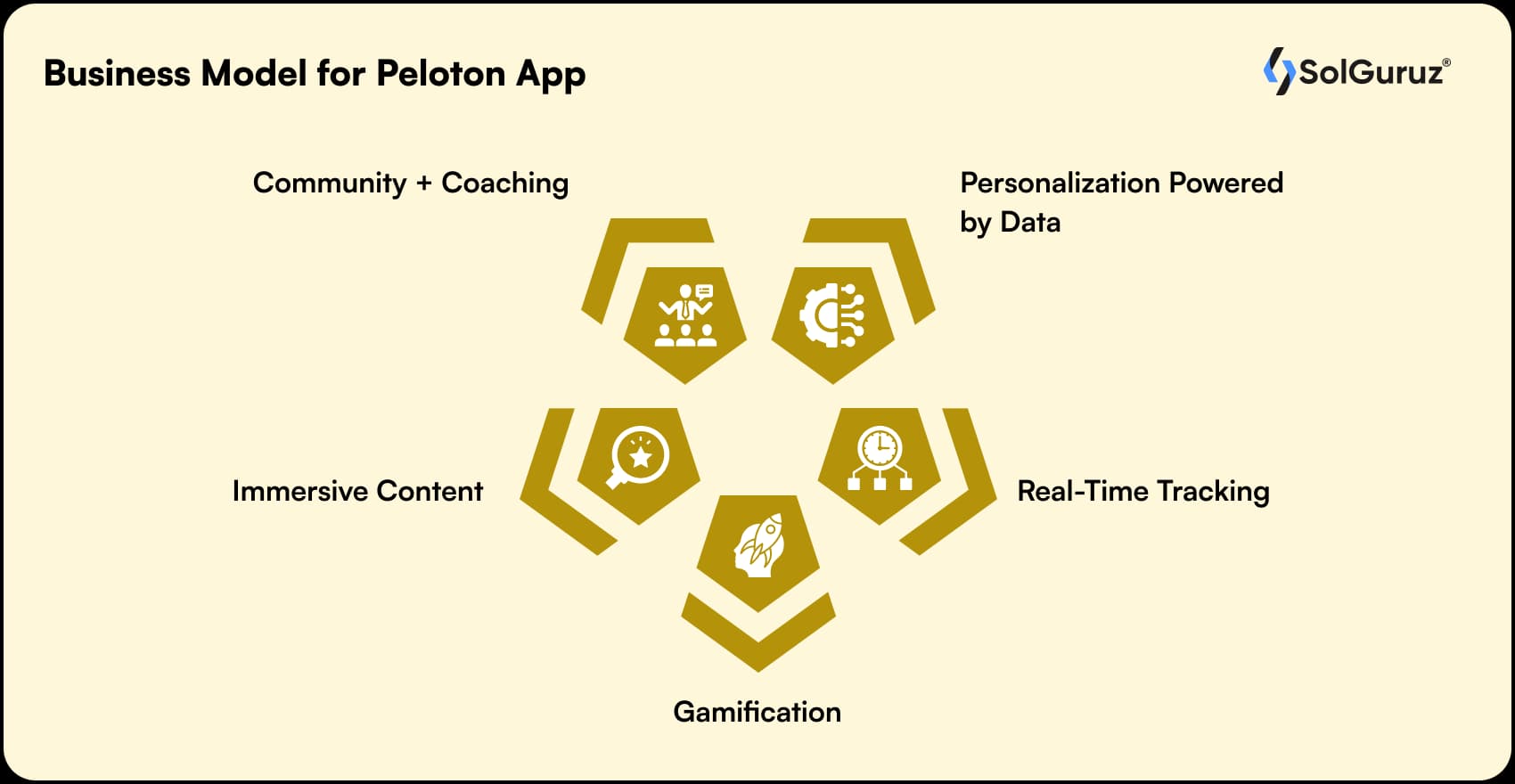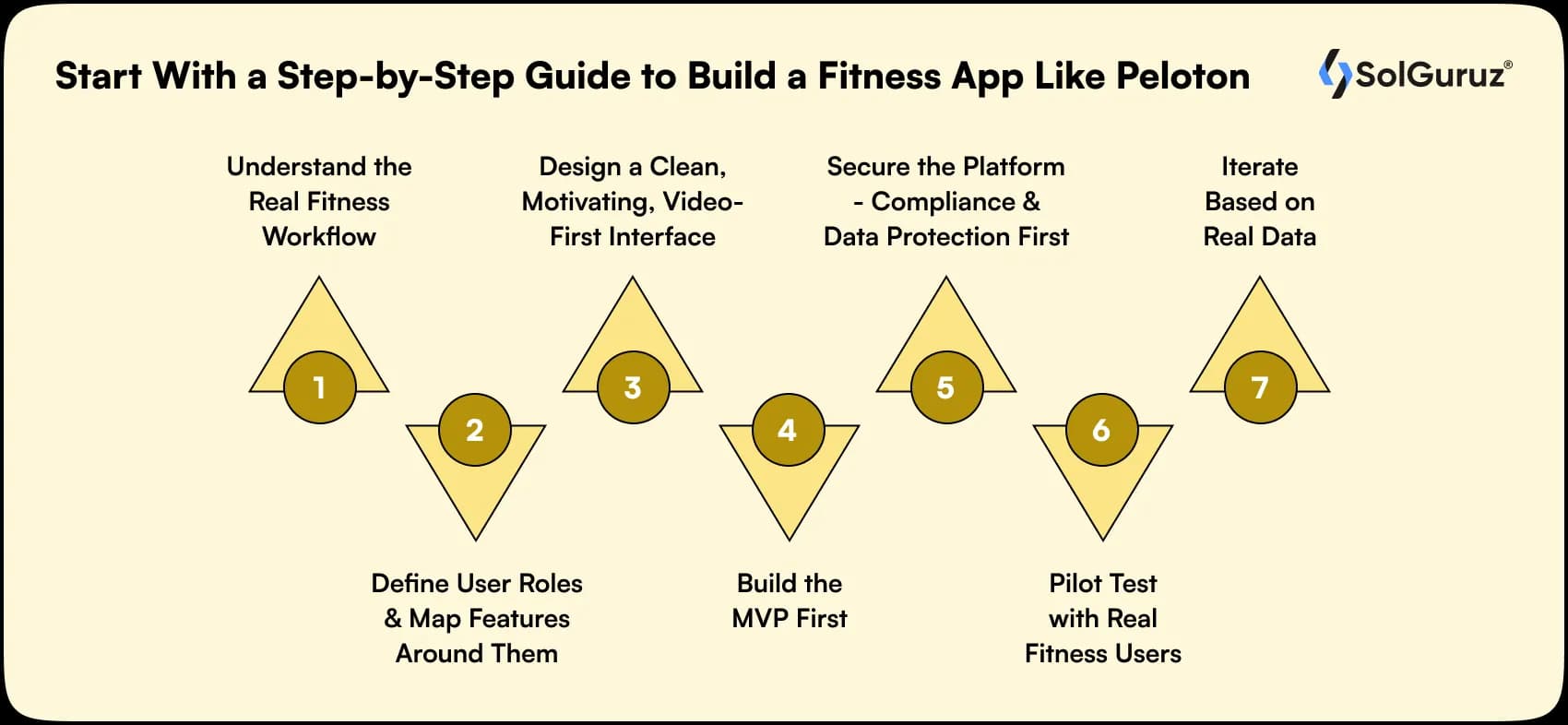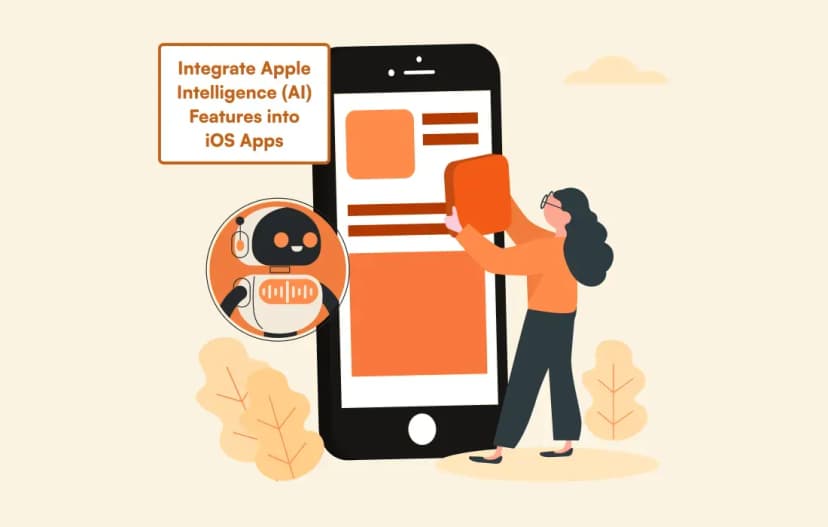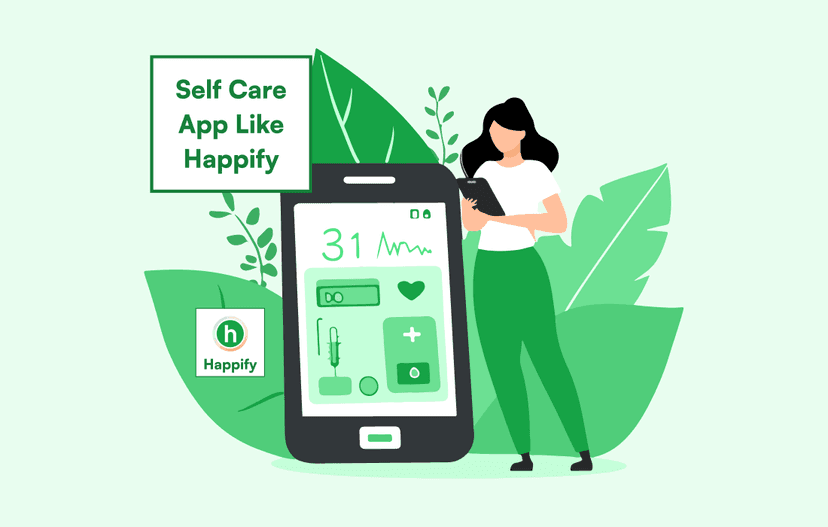How to Build a Fitness App Like Peloton – Your On-Demand Fitness Companion
Building a fitness app like Peloton doesn’t require a massive budget – just the right strategy. This guide breaks down the features, tech stack, cost, and development roadmap you need to compete in the fast-growing digital fitness market. Learn how founders launch Peloton-style apps faster with AI, live streaming, wearables, and scalable architecture.

Sarah, a fitness entrepreneur, wants to launch a fitness app.
But every time she starts planning, the same questions keep hitting her-
“How do I build something as engaging as Peloton – without a massive budget?”
“What features actually matter if I want to compete?”
“How do I keep users from dropping off in a crowded fitness market?”
“How do I monetize this without relying only on subscriptions?”
Most founders and fitness creators feel stuck at this exact point.
That is when Sarah came to us.
With our experience building real-world fitness apps – like Balanced Being – we helped her turn her idea into a sleek, high-performing platform with live classes, AI recommendations, wearable integrations, and a community that keeps users coming back.
The best part – she did not need Peloton’s budget to do it.
If you are asking the same questions or want to build a fitness app like Peloton that users love, engage with, and happily pay for, you are in the right place.
We’ll break down:
- Must-have features with the development process
- How to design for retention?
- Tech stack
- Realistic cost breakdown
And how to build it faster with SolGuruz
Let’s get started.
Table of Contents
Let’s Look Into the Business Model for Peloton App (And Why Build Something Similar?)
Peloton didn’t win because it offered workouts.
It won because it delivered community, accountability, and personalization – all wrapped in studio-quality content for the audience.

Catering directly to the users worked in favor of Peloton.
Here’s the Peloton formula that works:
- Community + Coaching
Live classes + instructor personalities + real-time engagement.
- Immersive Content
On-demand libraries, flexible schedules, world-class production.
- Gamification
Leaderboards, streaks, achievements, badges.
- Real-Time Tracking
Calories, cadence, heart rate, resistance, and more.
- Personalization Powered by Data
Customized workout plans + smart recommendations.
If your app can deliver even 60% of this experience, you can capture a rapidly growing market of fitness lovers.
But there is a challenge – people who want to get fit but cannot go directly to the gym due to time crunch, affordability, or reach. They need a solution that can cater to them remotely or anywhere they are.
And if you are a fitness freak, then you are disciplined. (You don’t like to break your fitness journey. Do you?)
A custom fitness app development company can help you develop such apps. Fitness apps like Peloton help them keep up their fitness. Be it their home or any other place.
Start With a Step-by-Step Guide to Build a Fitness App Like Peloton (With Key Features)

To build a high-performing fitness platform like Peloton, you need clarity, structure, and user empathy from Day 1.
Ask yourself :
- Who exactly are you building this for?
- What motivates them to work out digitally?
- What daily friction stops them from achieving their fitness goals?
With these answers in mind, the development journey becomes smoother, faster, and far more impactful.
Your goal?
Deliver a fitness product that users love, trainers trust, and investors believe in.
1) Understand the Real Fitness Workflow

Every fitness user has a unique routine-some follow structured programs, others hop into live classes, and many want data-driven personalization.
Here are the different people for whom you will be building an app, and what are their pain points?
We have listed them for you:
User Personas
- Fitness beginners
- Intermediate workout enthusiasts
- Trainers/instructors
- Gym owners
- Performance-focused athletes
Address their pain points:
✔ Beginners feel lost without proper guidance
✔ Busy professionals need quick, easy-to-follow workouts
✔ Fitness influencers need a platform to teach and build community
✔ Gym owners want digital engagement and retention
✔ Athletes want performance metrics and structured training
You must understand the real-world workflow of your users
To develop a fitness tracking app like Peloton, you must answer these questions :
- Which workouts will the app offer?
- How do trainers upload/manage their content?
- How will users track progress easily?
- Is it motivating for them to look at the metrics like burnt calories?
- Will the app integrate with smartwatches or fitness wearables?
- How will live classes and replays work?
- What causes workout drop-offs or low engagement?
Once you map these workflows, your feature clarity will naturally emerge. This will help you sketch the roadmap for Peloton-like App Development in a better way.
2) Define User Roles & Map Features Around Them
A Peloton-style app must serve multiple user personas – each with their own goals and workflows.
Building role-specific features boosts adoption and long-term retention.
Persona → Feature → Why It Matters
| Persona | Feature | Why It Matters |
| Fitness User | Personalized workout recommendations | Removes decision fatigue; boosts engagement |
| Fitness User | Live + on-demand class access | Anywhere-anytime convenience |
| Fitness User | Real-time performance tracking | Progress motivates users |
| Trainer | Class scheduling & content upload | Consistent engagement with followers |
| Trainer | Workout insights dashboard | Understand user performance |
| Gym Owner | Branded studio & member analytics | Digital extension of gym business |
| Admin | Subscription management | Smooth monetization |
| Admin | Push notifications & reminders | Reduce drop-off and missed workouts |
Pro Tip: Conduct quick interviews with 8–10 real users to validate these feature priorities. Don’t build based on assumptions.
3) Design a Clean, Motivating, Video-First Interface
A fitness app must be convenient, visually appealing, and motivating.
Users interact with your app during workouts, so a distraction-free design is essential.
UX/UI Features by Persona
| Persona | Feature | Why It Matters |
| Fitness User | Mobile-first workout screens | Most workouts happen on the phone |
| Fitness User | Dark mode for night workouts | Better focus and readability |
| Fitness User | Easy class filters (duration, intensity, trainer) | Saves time; boosts engagement |
| Trainer | Simple video upload experience | Makes content creation effortless |
| Trainer | Real-time class chat controls | Helps manage live sessions |
| Owner/Admin | Analytics dashboard | Tracks revenue, engagement, and retention |
Pro Tip: Include offline downloads for users working out in gyms, remote areas, or low-network zones.
4) Build the MVP First (The “Peloton Lite”)
You don’t need to start big like Peloton. What you need is great features that work up the engine.
You can always add the glitter and shine later once you get full-fledged funding.
We suggest consulting an MVP development service for the feature discussion and how you can build fast to impress the investors.
Your MVP’s purpose should be simple:
“Prove that your platform can motivate users, deliver quality workouts, and increase retention.”
Essential MVP Features:
- User onboarding + fitness goal setup
- Live video streaming (basic)
- On-demand workout library
- Workout categories + filters
- Trainer/instructor profiles
- Subscription + payment support
- Basic progress tracking
- Push notifications + reminders
- Wearable integration (phase 1: calories, steps, heart rate)
This is the foundation that brings your product to life.
Add Advanced Features (Post-MVP Expansion)
Once your MVP is validated, add features that elevate your product and differentiate it from competitors.
Advanced Features Table
| Feature | What It Adds |
| AI-Powered Workout Plans | Custom plans based on goals, fatigue, and progress |
| Computer Vision Form Correction | Guides users in real-time to avoid mistakes |
| Smart Wearable Syncing | Real-time metrics from Apple, Garmin, and Fitbit |
| Gamified Leaderboards | Boost motivation and community engagement |
| Performance Analytics Dashboard | Personalized insights and recommendations |
| AR Fitness Mode | Immersive workout experiences |
| Social Features | Groups, challenges, community feed |
| Trainer Marketplace | Let’s trainers monetize content |
Recommendation: Always prioritize features that increase engagement or increase revenue.
Add automation and intelligence at a later stage.
5) Secure the Platform – Compliance & Data Protection First
Fitness apps handle sensitive health and biometric data.
Security cannot be an afterthought.
Key Security Features by Panel
| Panel | Feature | Purpose |
| All Users | Role-based access control | Prevent unauthorized access |
| Admin | Detailed activity logs | Clear audit trail |
| Backend | Encrypted APIs | Protect personal & health data |
| Payments | PCI-DSS compliant gateway | Safe subscription billing |
| Data Layer | GDPR / HIPAA compliance | Health data privacy |
You must comply with:
- GDPR
- HIPAA
- SOC2
- Regional data laws
6) Pilot Test with Real Fitness Users
Before launch, test your MVP with a small group of 15–20 fitness enthusiasts + 2–3 trainers. Get their feedback.
Quality testing is not just about fixing bugs; it is more about how the app is going to behave with the end-user.
It is advisable to work with a QA automation service where you can get self-healing automation and reduce flaky scripts.
Track:
- Are live classes smooth under low network conditions?
- Do video replays load instantly?
- Are users completing workouts or dropping off?
- Do push notifications help engagement?
- Are metrics syncing correctly with wearables?
These insights shape your next sprint.
7) Iterate Based on Real Data (Not Assumptions)
Once you analyze user feedback, you’ll hear things like:
- “I want playlists synced to my workouts.”
- “Video quality drops on WiFi.”
- “I want a weekly progress summary.”
- “Can we get challenges with friends?”
This iterative loop is what turns a basic app into a Peloton competitor.
This is how real fitness platforms grow strong user retention. Input user feedback into your app to get a strong competitor.
Tech Stack for Peloton-Like App Development
| Component | Tech Stack | Why It Matters |
| Frontend | Flutter / React Native | It is fast, cross-platform mobile development |
| Backend | Node.js / Python (FastAPI) | Scalable API-first architecture |
| Database | PostgreSQL / MongoDB | Handles structured fitness + media data |
| Streaming | AWS IVS / Agora / Twilio | Ultra-low latency video |
| Real-Time Updates | WebSockets / Firebase | Live chat, leaderboards, metrics |
| Authentication | OAuth / JWT | Secure login & role handling |
| Wearables | HealthKit / Google Fit / Fitbit SDK | Sync real-time metrics |
| Notifications | Firebase Cloud Messaging | Engagement + reminders |
| AI Models | TensorFlow Lite / OpenAI | Personalization + form correction |
| Deployment | Docker, AWS/GCP, CI/CD | Stability + scalability |
| Compliance | GDPR, HIPAA | Readiness for global scaling |
If you want to build smarter, implement cross-platform app development with Flutter or React Native. It makes sure:
- One codebase
- Faster delivery
- Lower cost
- Uniform experience on iOS & Android
What is the Cost to Develop a Fitness App Like Peloton?
When working on a fitness app, our clients ask us the question, “How much does it cost to develop a fitness app like Peloton?”
| Build Type | What’s Included | Estimated Cost (USD) | Timeline |
| MVP (Core Build) | Live classes, on-demand library, profiles, payments, progress tracking | $10,000 – $30,000 | 3–4 months |
| Mid-Level App | Wearables, leaderboards, analytics, trainer dashboard, AI recommendations | $40,000 – $70,000 | 5–6 months |
| Enterprise Fitness Platform | Advanced AI, computer vision, AR, marketplace, global scaling | $80,000 – $110,000+ | 7–11+ months |
Also, include some factors that influence the cost, so you understand why the change happens in price and are not kept in the dark.
Factors influencing cost:
- Region of development
- Team size
- Custom UI/UX or integrations
- Data security/compliance overhead
You can always ask the custom fitness app development company to explain to you in detail what the cost is going to be.
Develop a Peloton-like app (But better)
What the Client Needed
The client wanted to build a unified fitness platform where users could track multiple workout types, stay motivated, and improve their health without juggling multiple apps. They needed:
- A clean, modern mobile app (iOS + Android)
- Support for diverse activity tracking (running, yoga, surfing, strength, meditation, etc.)
- Offline-friendly functionality for remote workouts
- Personalized onboarding to boost engagement
- A scalable architecture for future feature expansion
What SolGuruz Delivered
SolGuruz designed and built Balanced Being, a cross-platform fitness app crafted with an intuitive UX and a strong mobile foundation using Flutter.
Key modules included:
- Multi-activity fitness tracking (walking, swimming, surfing, cycling & more)
- Personalized onboarding flow to help users set goals
- Offline mode for recording workouts without internet
- Wearable & device integration for progress tracking
- Smart dashboards showing activity history, calories, and performance trends
Outcomes & Key Metrics
- 6-month end-to-end delivery from designs to App Store + Play Store launch
- Higher user engagement with goal-based onboarding flows
- Improved workout consistency thanks to offline tracking
- Minimal app bloat by using a single cross-platform codebase
- Future-ready architecture enabling fast feature rollout (AI, coaching, challenges, etc.)
Whether you’re building a fitness platform, wellness app, or a full-scale digital training ecosystem, SolGuruz can help you build a high-performing fitness app tailored to your users – just like we did for Balanced Being.
A Peloton-Style Fitness App Is Your Next Competitive Advantage
Now, fitness is way beyond posting a few workout videos on social media.
People want community, motivation, and a place that helps them stay consistent – not another random app they forget in three days.
You can build something even better than Peloton – because it’s tailored to your audience, their training style, and your business goals.
At SolGuruz, we help you build fitness platforms that actually drive engagement.
From live streaming and wearable integration to AI-powered recommendations and gamification – we make sure your app feels personal, smart, and addictive (in a good way).
Whether you want an MVP in a few weeks or a full-scale fitness ecosystem with AI, analytics, and global scalability, we help you launch faster and grow smarter.
Let’s build a fitness experience your users keep coming back to – not just another app they download and forget.
FAQs
1. How do I build a fitness app like Peloton?
To build a fitness app like Peloton, start by defining your user personas, designing a video-first interface, and building core features like live classes, on-demand workouts, progress tracking, and subscriptions. Then add advanced features such as AI recommendations, wearable integration, and gamification. Partnering with an experienced fitness app development company accelerates the process and reduces cost.
2. What features should a Peloton-like fitness app include?
Some of the must-have features are live streaming, trainer dashboard, progress tracking, wearable integration, community features, and gamification. You can also include advanced features like AI workout recommendations, computer vision form correction, and real-time performance metrics.
3. Do I need AI to build a competitive fitness app today?
Not exactly. You don’t need AI but mobile app developers to build a fitness app. AI can be to your advantage. Features like AI-powered workout plans, smart nudges, form detection, and predictive analytics significantly improve retention and personalization.
4. How do fitness apps like Peloton make money?
Peloton-style apps make money through subscriptions, freemium plans, class credits, and instructor marketplaces. Brand partnerships and corporate wellness programs are some other ways Peloton earns revenue.
5. Can SolGuruz build a custom fitness app like Peloton?
Yes. SolGuruz has hands-on experience building fitness apps. We have built fitness platforms with live workouts, multi-activity tracking, offline support, wearables, and personalized user journeys.
Ready to Build Your Peloton-Style Fitness App?
Get a custom roadmap, feature plan, and cost estimate built for your fitness niche.

Strict NDA

Trusted by Startups & Enterprises Worldwide

Flexible Engagement Models

1 Week Risk-Free Trial
Give us a call now!

+1 (724) 577-7737



